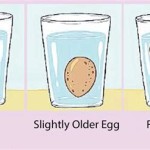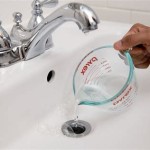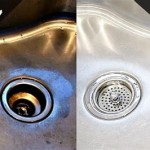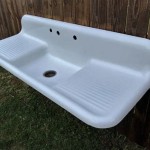Sink Backed Up: Troubleshooting Your Garbage Disposal Issues
A sink backed up with water provides a significant inconvenience for homeowners. When this issue is coupled with a malfunctioning garbage disposal, the frustration can quickly escalate. This article aims to provide a comprehensive overview of the common causes of a sink backed up when using a garbage disposal, along with practical troubleshooting steps and preventative measures.
Understanding the interplay between the sink drain, the garbage disposal, and the plumbing system is crucial for effective problem-solving. The garbage disposal is designed to grind food waste into smaller particles, allowing it to flow smoothly through the drainpipes and into the sewer system. However, various factors can disrupt this process, leading to blockages and backflow.
Identifying the Root Cause of the Backup
Before attempting any repairs, identifying the underlying cause of the sink backup is essential. Several potential culprits could be at play, ranging from simple clogs to more complex plumbing issues.
One common cause is an accumulation of food waste or other debris within the garbage disposal unit itself. Certain types of food, such as fibrous vegetables (celery, artichokes), coffee grounds, and starchy items (rice, pasta), are known to be problematic for garbage disposals. These materials can bind together, forming a dense mass that obstructs the grinding mechanism and restricts water flow. Grease and fats solidify as they cool, clinging to the disposal's interior and trapping other particles. This can create a stubborn blockage that is difficult to dislodge.
Another possible cause is a blockage further down the drainpipe. Even if the garbage disposal is functioning properly, debris can still accumulate in the pipes, creating a bottleneck that restricts water flow. This is particularly common in older plumbing systems, where pipes may be narrower or more susceptible to corrosion. In addition, foreign objects accidentally dropped into the drain, such as utensils, bottle caps, or small toys, can cause significant blockages.
A less frequent, but potentially serious, cause of a sink backup is a problem with the plumbing vent system. Vent pipes allow air to enter the plumbing system, which helps to maintain proper water flow and prevent suction. If a vent pipe is blocked or obstructed, it can create negative pressure within the drainpipes, slowing down or even stopping the flow of water. This can manifest as a sink backup, even if the garbage disposal and drainpipes are clear.
Finally, in some cases, a sink backup may be indicative of a larger plumbing issue, such as a clogged sewer line. A sewer line blockage will affect all drains in the house, not just the kitchen sink. If other drains are also slow or backing up, it is likely that the problem lies with the main sewer line.
Troubleshooting Steps for a Backed Up Sink
Once the potential causes of the sink backup have been considered, a systematic approach to troubleshooting is necessary. Starting with the simplest solutions and progressing to more complex ones can often resolve the issue without the need for professional assistance.
The first step is to turn off the garbage disposal at the circuit breaker. This is a crucial safety precaution to prevent accidental activation while working on the unit. Next, visually inspect the inside of the disposal chamber. Remove any visible debris, such as large food particles or foreign objects, using tongs or pliers. Never reach into the disposal with bare hands, as the blades can be sharp. After removing any visible debris, try running cold water into the disposal for a few minutes to see if the water drains freely. If the water still backs up, proceed to the next step.
A common remedy for a jammed garbage disposal is to use the reset button, typically located on the bottom of the unit. Pressing this button can sometimes dislodge minor obstructions and restore normal operation. After pressing the reset button, wait a few minutes and then turn the garbage disposal back on at the circuit breaker. Run cold water into the disposal while it is running to help flush out any remaining debris. If the disposal still does not function properly, further troubleshooting is required.
If the reset button does not resolve the issue, a more aggressive approach may be necessary to clear the blockage. One effective method is to use a plunger. Fill the sink with enough water to cover the cup of the plunger. Place the plunger over the drain opening and create a tight seal. Plunge vigorously for several minutes, using an up-and-down motion. Remove the plunger and check if the water drains freely. Repeat this process several times if necessary. If the plunger is unsuccessful, consider using a drain snake, also known as an auger.
A drain snake is a flexible tool that can be inserted into the drainpipe to break up or retrieve stubborn blockages. Carefully insert the drain snake into the drain opening and feed it down the pipe. Rotate the snake as it goes to help it navigate through any bends or obstructions. If the snake encounters a blockage, continue rotating it to break up the debris or snag it for removal. Once the blockage is cleared, carefully remove the drain snake and flush the drain with plenty of water. Exercise caution when using a drain snake, as it can damage the drainpipes if used improperly.
Another potential solution involves using a mixture of baking soda and vinegar. Pour one cup of baking soda down the drain, followed by one cup of vinegar. The mixture will fizz and bubble, helping to loosen any accumulated debris. Let the mixture sit for about 30 minutes, then flush the drain with hot water. This method is particularly effective for dissolving grease and other organic matter. However, it may not be strong enough to clear more severe blockages.
Preventative Measures to Avoid Future Backups
While troubleshooting can resolve existing sink backups, implementing preventative measures is essential to avoid future problems. Simple changes in habits and maintenance practices can significantly reduce the likelihood of clogs and backups.
One of the most important preventative measures is to avoid putting certain types of food waste down the garbage disposal. As previously mentioned, fibrous vegetables, coffee grounds, starchy items, and grease are particularly problematic. These materials can easily clog the disposal and drainpipes, leading to backups. Instead, dispose of these items in the trash or compost them if possible. Scrape plates thoroughly before washing them to minimize the amount of food waste that enters the drain. Consider using a sink strainer to catch any remaining food particles.
Regularly flushing the garbage disposal with cold water can help to keep it clean and prevent debris from accumulating. After each use, run cold water into the disposal for at least 30 seconds to flush out any remaining food particles. Avoid using hot water, as it can cause grease to solidify and cling to the disposal's interior. Periodically grinding ice cubes in the disposal can also help to sharpen the blades and dislodge any accumulated debris. Add a few citrus peels to the ice for a natural deodorizer.
Regular maintenance is crucial for prolonging the life of the garbage disposal and preventing backups. At least once a month, clean the disposal thoroughly to remove any accumulated grease or debris. One effective method is to pour a mixture of hot water and dish soap down the drain while running the disposal. This will help to dissolve any grease and flush out any lingering particles. Alternatively, use a commercially available garbage disposal cleaner. Be sure to follow the manufacturer's instructions carefully.
Furthermore, ensure that the plumbing vent system is functioning correctly. Periodically inspect the vent pipes on the roof for any obstructions, such as leaves, bird nests, or other debris. If a vent pipe is blocked, it can be cleared using a garden hose or a plumbing snake. If unsure about how to clear a vent pipe, consult a professional plumber.
Finally, consider the age and condition of the plumbing system. Older pipes may be more susceptible to corrosion and blockages. If the plumbing system is old or has a history of frequent backups, it may be necessary to replace the pipes. Consult with a qualified plumber to assess the condition of the plumbing system and determine the best course of action.
When to Call a Professional Plumber
While many sink backups can be resolved with DIY troubleshooting, there are certain situations where professional assistance is required. Attempting to fix complex plumbing issues without the proper knowledge and tools can lead to further damage and costly repairs.
If the sink backup persists despite trying all of the troubleshooting steps mentioned above, it is advisable to call a plumber. A persistent backup may indicate a more serious plumbing issue, such as a clogged sewer line or a damaged drainpipe. Plumbers have the expertise and equipment to diagnose the problem accurately and provide the appropriate solution.
If there is any evidence of water damage, such as leaks or discoloration, it is important to call a plumber immediately. Water damage can lead to mold growth and structural damage, which can be costly to repair. A plumber can identify the source of the leak and repair it promptly to prevent further damage.
If there are signs of a plumbing vent problem, such as gurgling noises or slow-draining fixtures throughout the house, it is best to consult a plumber. Vent problems can be difficult to diagnose and repair without specialized equipment. A plumber can inspect the vent system and clear any obstructions or make necessary repairs.
Finally, if unsure about how to proceed with a plumbing repair, it is always best to err on the side of caution and call a plumber. Attempting to fix a problem without the proper knowledge can lead to further damage and potentially dangerous situations. A qualified plumber can provide expert advice and ensure that the repair is done safely and effectively.

Garbage Disposal Backing Up Into Sink Mr Rooter Plumbing

Most Effective Methods To Fix A Clogged Garbage Disposal

Clogged Kitchen Sink With Garbage Disposal How To Solve Quickly 3 Easy Fixes By Diynate

How To Unclog A Garbage Disposal Diy Guide Affresh Appliance Care

Garbage Disposal Backing Up Into Your Other Sink Here S The Fix

How To Clear Your Backed Up Garbage Disposal In 5 Easy Steps

4 Ways To Unclog A Garbage Disposal Wikihow Life

Garbage Disposal Backing Up Into Your Other Sink Here S The Fix

Kitchens Water Backs Up In Adjacent Sink Only When Garbage Disposal Is Used Home Improvement Stack Exchange

How To Unclog A Garbage Disposal Diy Guide Affresh Appliance Care







